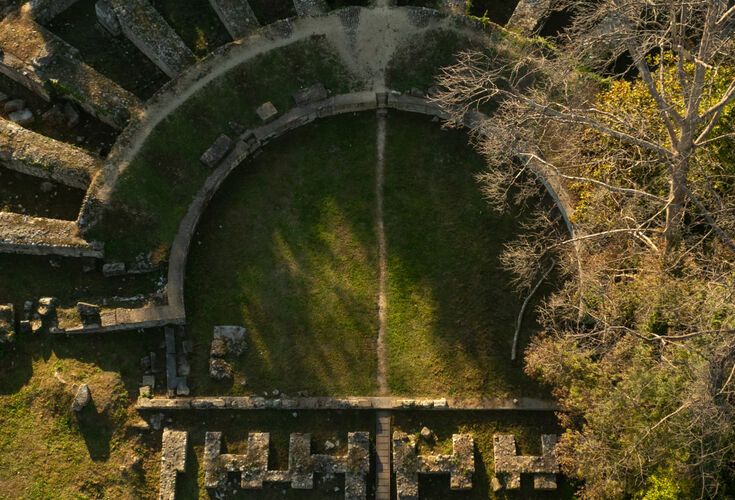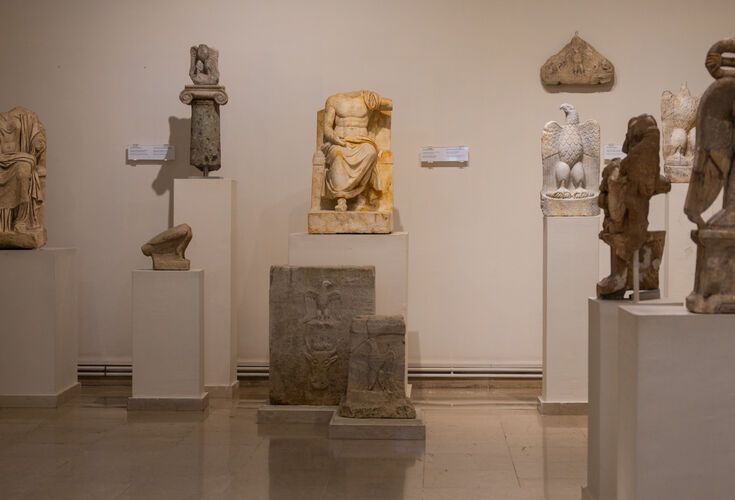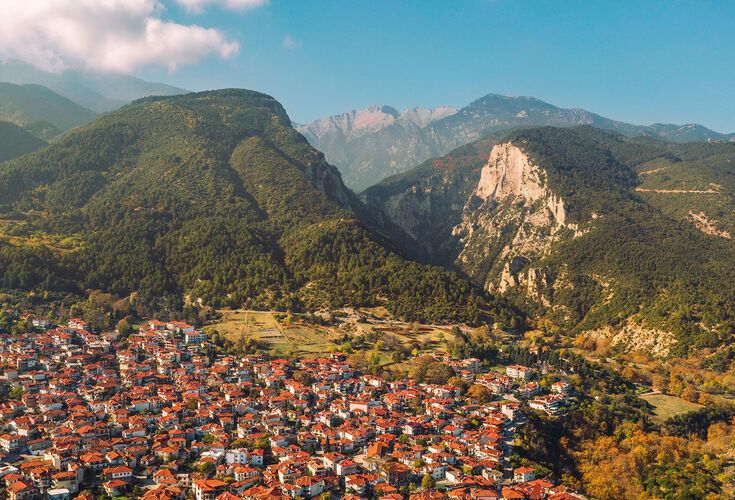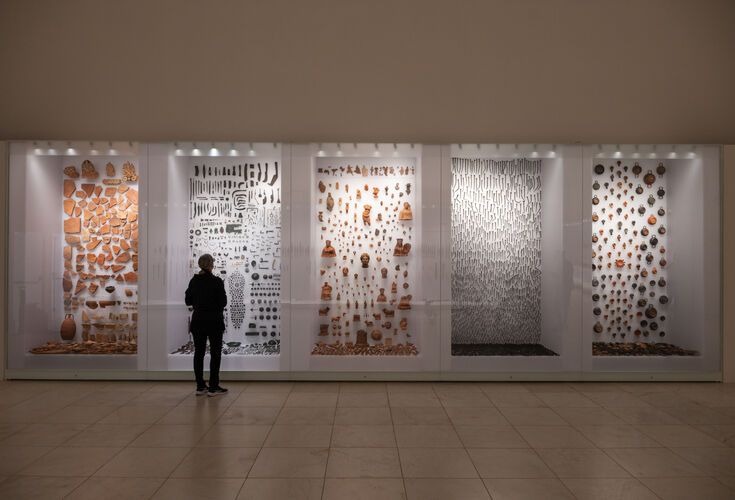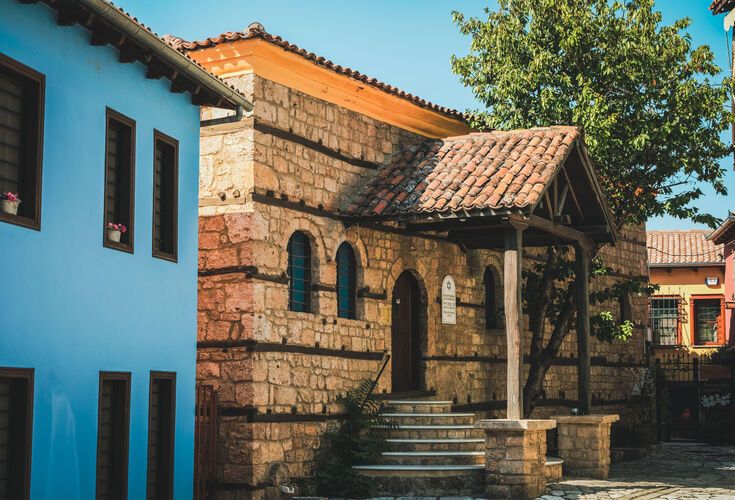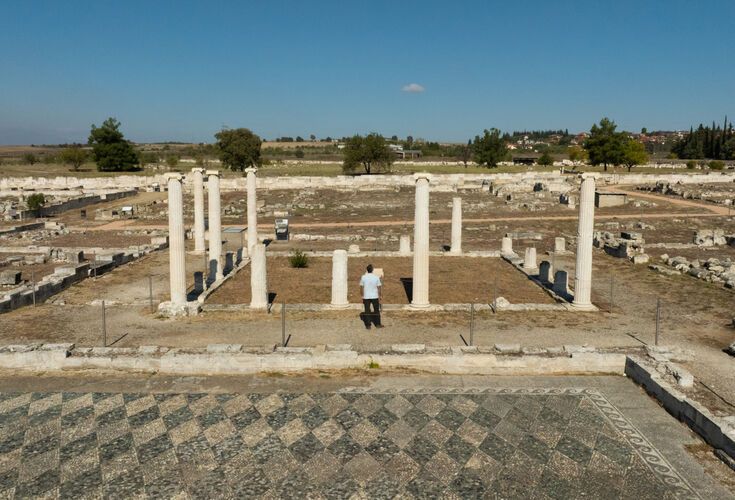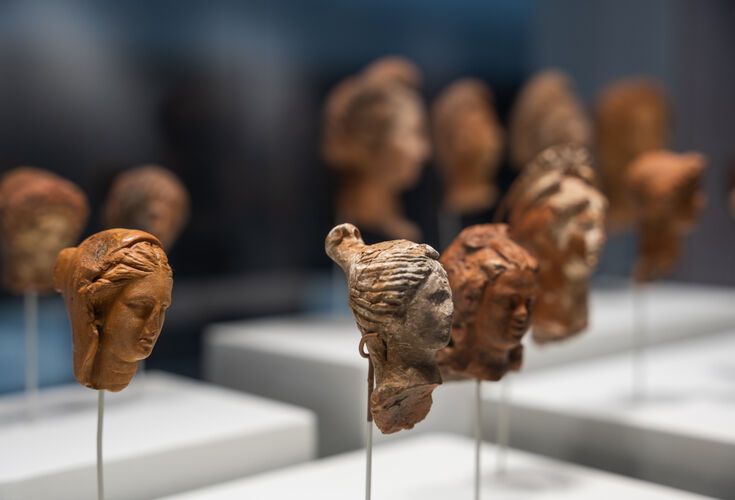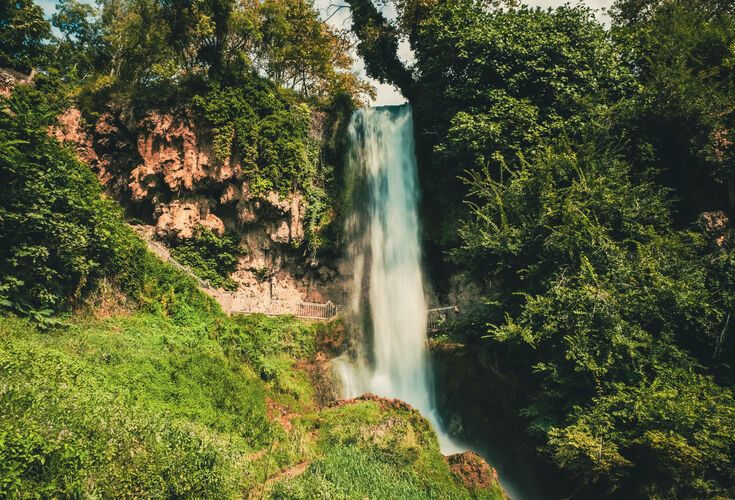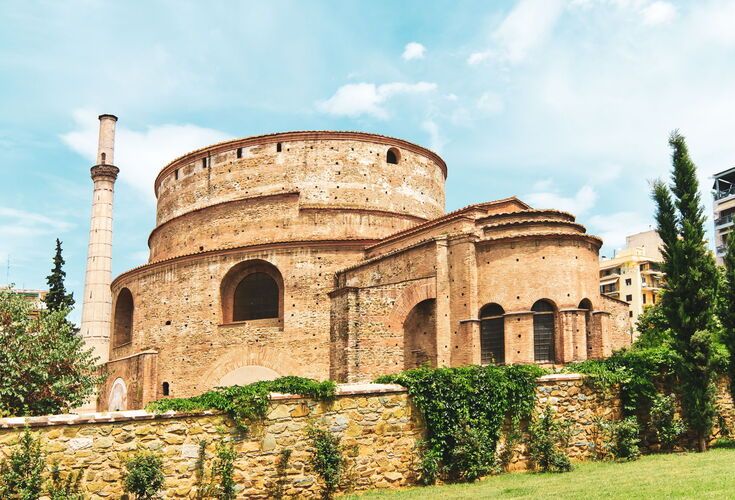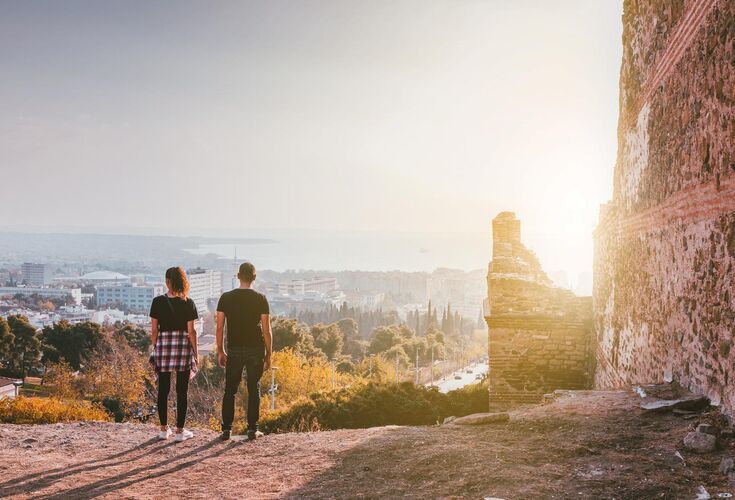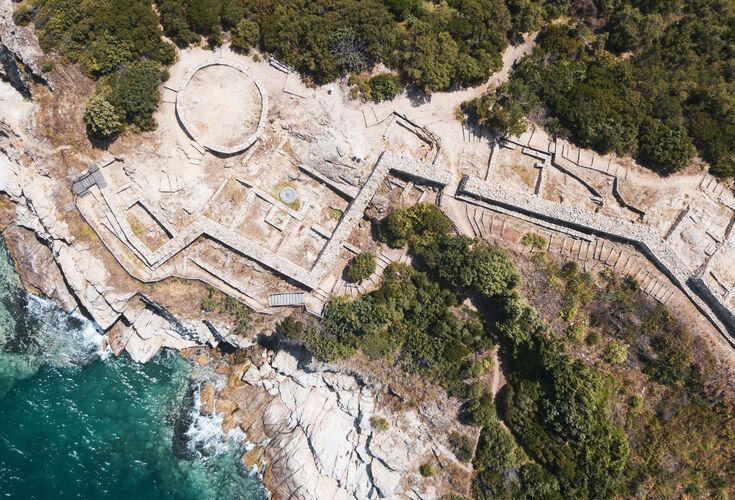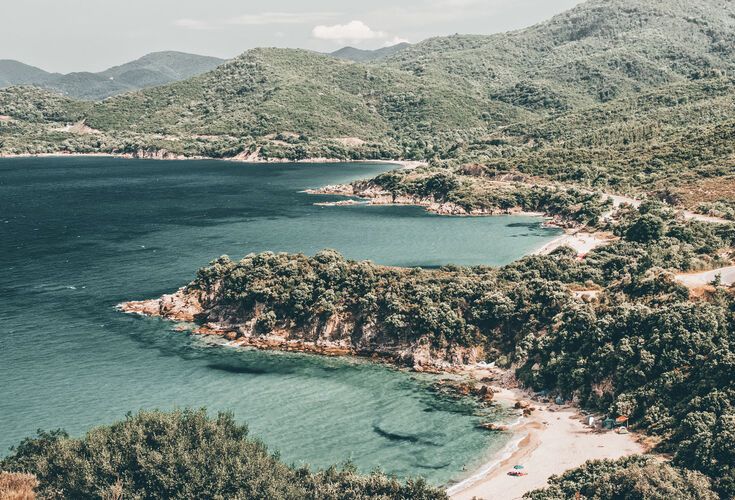The Royal Tombs
This UNESCO-protected archaeological wonder preserves not just the palatial tombs of Philip II and other members of Macedonian royalty but also the integrity of a solemn burial mound and a museum within the tumulus. It contains four palatial tombs (including those of Philip II and Alexander the Great’s teenage son, Alexander IV) and some of the most astonishing finds from Macedonian history: the gold larnax containing Philip’s bones (emblazoned with the Macedonian sun), his massive armour and the golden wreath he wore on his funeral pyre, almost luminous in the dimmed lighting, among them. Around the mound are some 300 smaller burial sites, including the so-called Cluster of the Queens, where Philip’s mother, Eurydice, and daughter, Thessaloniki, are buried.
Take a tour of the Royal Tombs of Aigai
